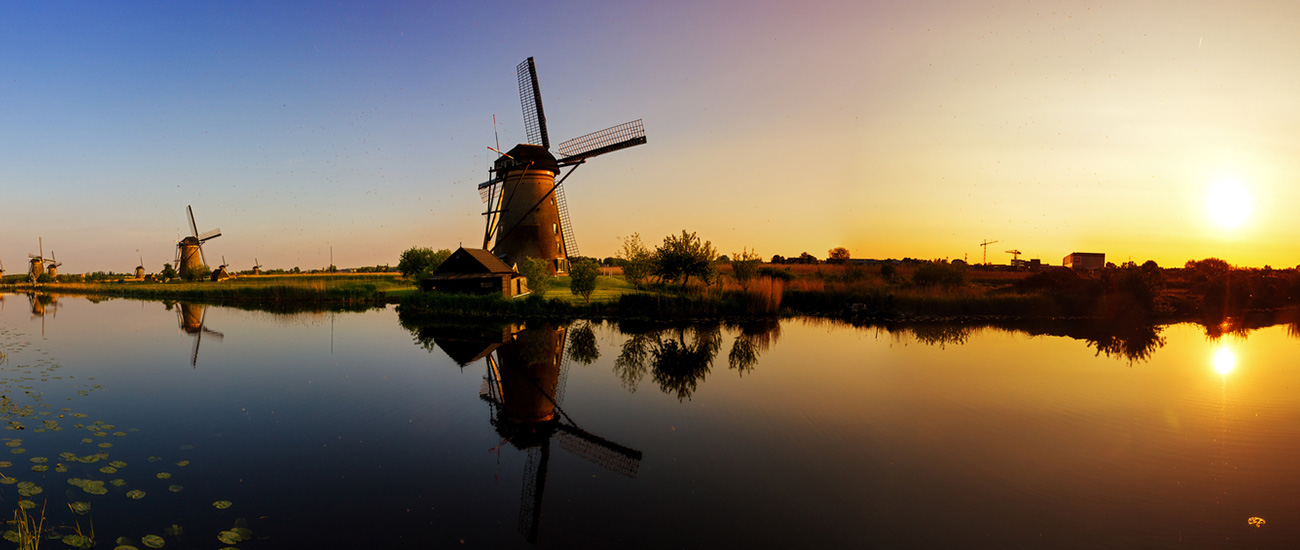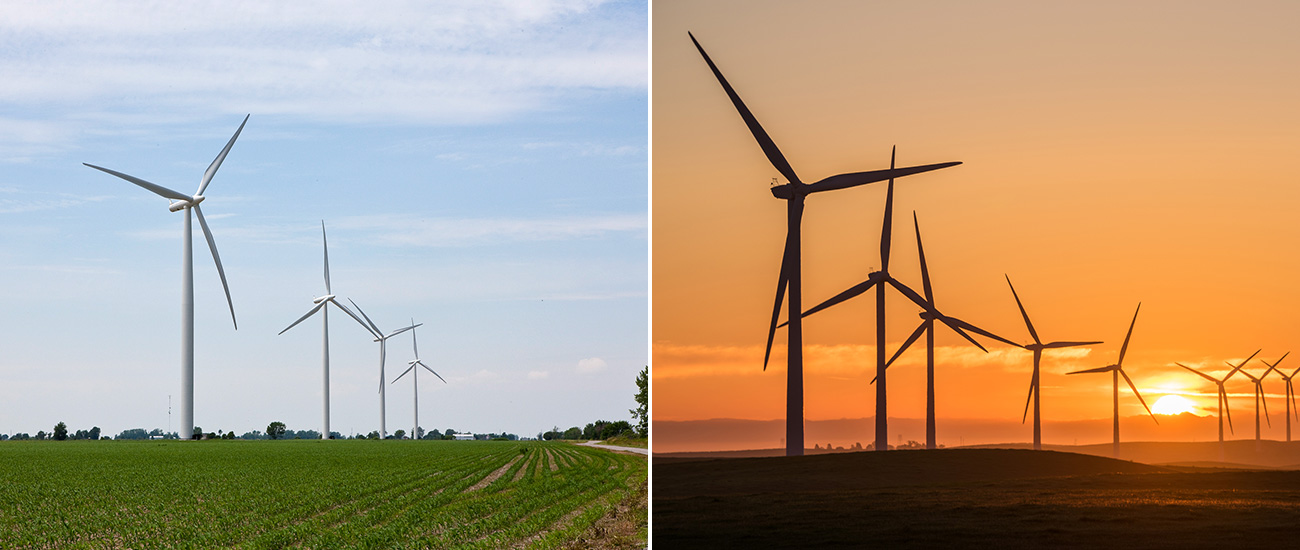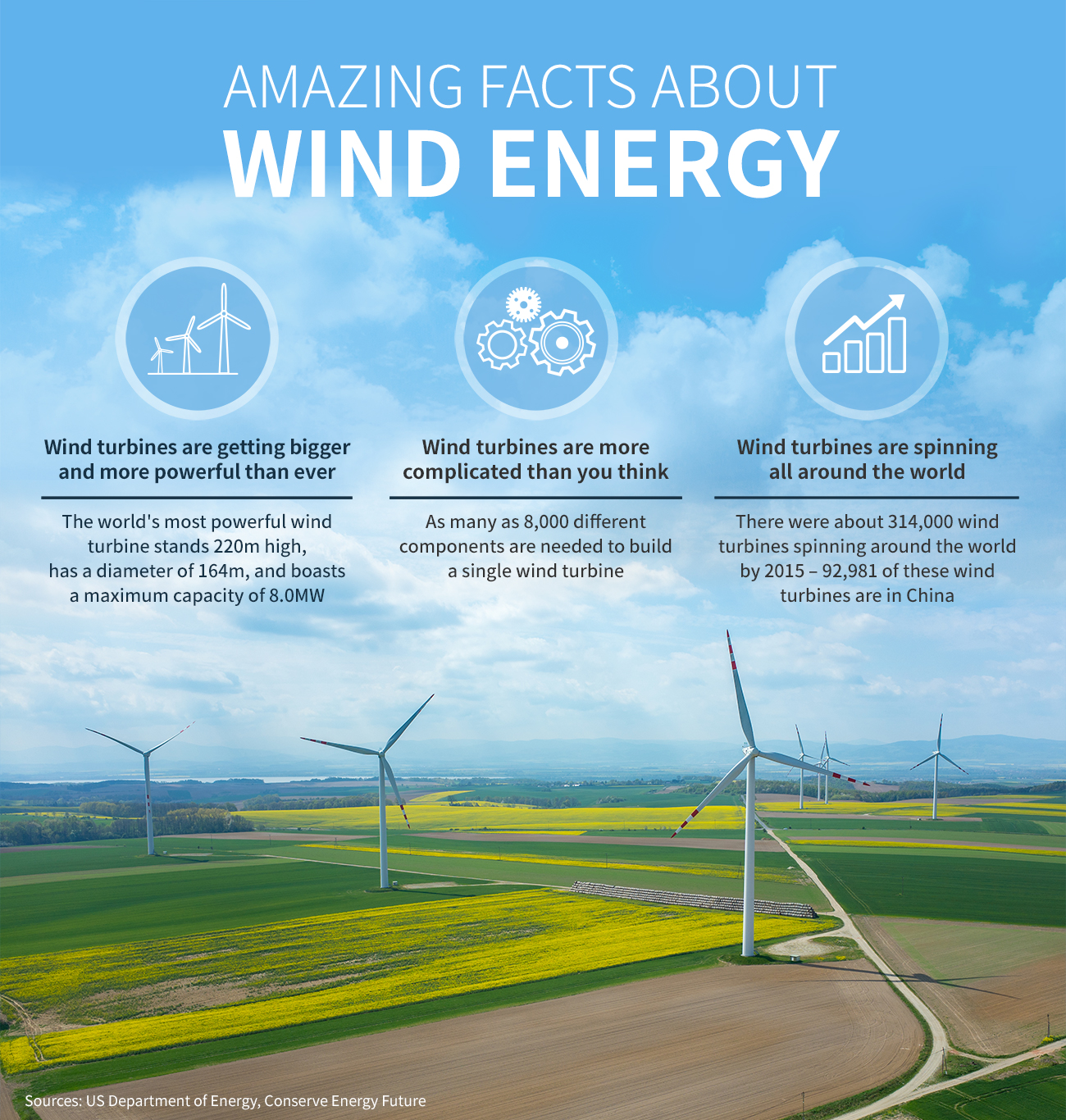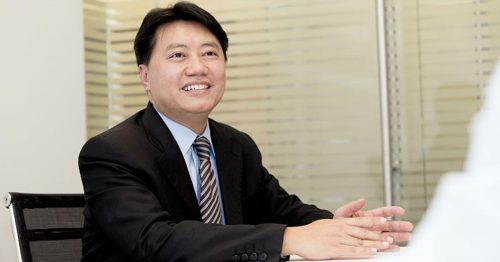The world’s population is growing fast, at a rate of over 1.1 percent per year. In fact, perhaps the only thing growing faster is our thirst for energy consumption.
As we become more numerous and affluent, our energy needs have risen by six times in the last 50 years, according to media outlet The Guardian. Almost everything we do in the digital age is powered by electricity. As concerns over fossil fuel-based energy grow, most countries are looking instead to invest in clean and alternative sources of power.
Although experts are divided over when exactly we will run out of oil, gas and coal, there is no disputing the fact that these three resources are finite, and that using them releases often harmful emissions. This is why, instead of converting exhaustible resources to power, scientists have been developing solutions that make use of renewable sources – such as wind power.
Winds of Change
Although the term wind power has only entered common usage recently, civilization has been harnessing energy from the wind for centuries. Just looking at a wind turbine, you can see how its construction was directly influenced by the windmill.
Historians in Asia have uncovered evidence dating back to around 200 BC that proves people on the continent used crude windmills to pump water. By the 11th-century, complex woven reed sail windmills had become widespread in the Middle East.
In the Middle Ages, Western European crusaders took inspiration from the windmills they saw on their military campaigns in the Levant, giving rise to a European interest in the technology.
Northern and Central Europeans in particular embraced the use of windmill innovations. The Netherlands is still well-known for its distinctive windmills. The 18th-century mills at Kinderdijk are some of the most famous in the world, and have been collectively classified as a UNESCO World Heritage Site.
During the mid-1900s, scientists started to give serious consideration to the concept of using the wind to do more than grind grain or drive underground water to the surface. They began to explore ways of using gigantic rotatable blades to generate electrical energy. Engineers in the United States, for example, developed a 1.25 MW turbine in Vermont that provided power to the region during World War II.
Modern wind turbines have come a long way. The European Wind Energy Association says an average unit can nowadays produce more than 5 million kWh of electricity per year. Roughly speaking, that is enough energy to power about 1,500 European households.
Pressing Need
Now that the technology is in place, environment and energy experts alike insist that the need to implement renewable energy solutions is pressing. Even though the global power industry has been divided on specifics for some time, most agree that the time for action is already upon us.
The International Energy Agency says, “For every US$1 of investment in cleaner technology that is avoided in the power sector before 2020, an additional US$4.30 would need to be spent after 2020 to compensate for the increased emissions.”
Fortunately, it seems that the outlook for renewable power is now looking brighter than ever.
Major political leaders are starting to make firm promises about the near-present that will require immediate action. At the recent ‘Three Amigos Summit’ in Ottawa, Canada, U.S. President Barak Obama, Canadian Prime Minister Justin Trudeau and Mexican head of state Enrique Peña Nieto agreed that the three countries would ensure 50 percent of North America’s electricity comes from renewable sources by 2025.
With commitments of this sort becoming the norm, large-scale wind farms are now springing up all over the planet. Samsung C&T is at the heart of a three-phase project involving both wind and solar power generation in Ontario, Canada.
Meanwhile, off the coast of Scotland, engineers are beginning work on what will be the world’s first floating wind farm, harnessing sea winds that average at over 35km per hour. Aberdeen Institute of Energy director Paul Mitchell calls the development of offshore wind farms of this sort “a potential game-changer for the industry.”
Elsewhere in Europe, Portugal has added 550 MW of wind capacity since 2013. Earlier this year, the country successfully proved it could run on renewable energy alone for a total of four days.
China installed a whopping 30.8 GW worth of wind power capacity in 2014 alone, more than the whole industry installed in 2008. The country is also notably home to the Gansu Wind Farm, the largest in the world. Plans are afoot that will see Gansu almost triple its power output by the year 2020. The Global Wind Energy Council stated in last year’s Global Wind Report, “The Chinese industry continues to amaze.”
Many claim that even lower fossil fuel prices do not provide an obstacle to the development of wind and other renewable forms of energy. Bloomberg New Energy Finance this year stated, “Cheaper coal and cheaper gas will not derail the transformation and decarbonization of the world’s power systems. By 2040, zero-emission energy sources will make up 60 percent of installed capacity. Wind and solar will account for 64 percent of the 8.6 terawatts of new power generating capacity added worldwide over the next 25 years, and for almost 60 percent of the US$11.4 trillion invested.”
Price-effective Solutions
Cost-wise, using wind power makes a lot of sense both in the short and long term. For many years, the prohibitively high cost of manufacturing wind turbines was used by wind power critics as a justification for berating it.
However, this is no longer the case. In South Africa, units of electricity from coal plants can cost up to 25 percent more than wind-generated power, according to figures released by the Economy of Regions Learning Network. Wind power in Australia can now be supplied at a cheaper price than newer coal or natural gas plants. Other countries are reporting similar findings.
Wind farms require no input costs, can operate 24 hours a day (after all, wind does not stop blowing at night) and call for no further investment once up and running – factors that go a long way toward proving wind power’s energy efficiency.
Global Wind Energy Council Secretary General Steve Sawyer says, “Wind power is now mainstream, supplying competitive, reliable and clean energy to fuel economic growth, and to cut emissions in established economies.”
It appears that the jury is no longer out on wind energy. In fact, it seems like it has instead delivered an almost unanimous verdict. As we slowly faze out our fossil fuel usage, wind is stepping up to the plate – ready to power the future.









